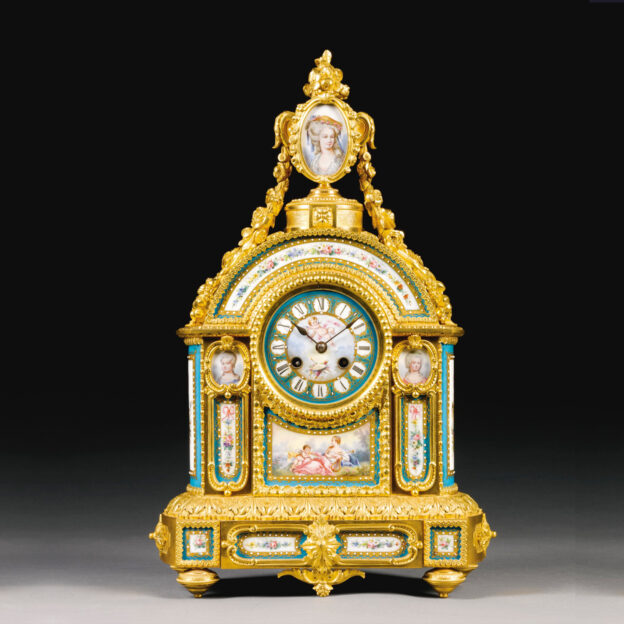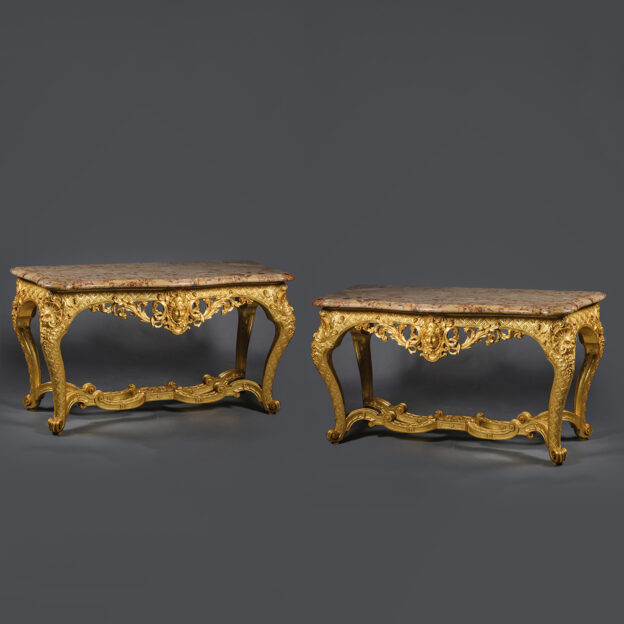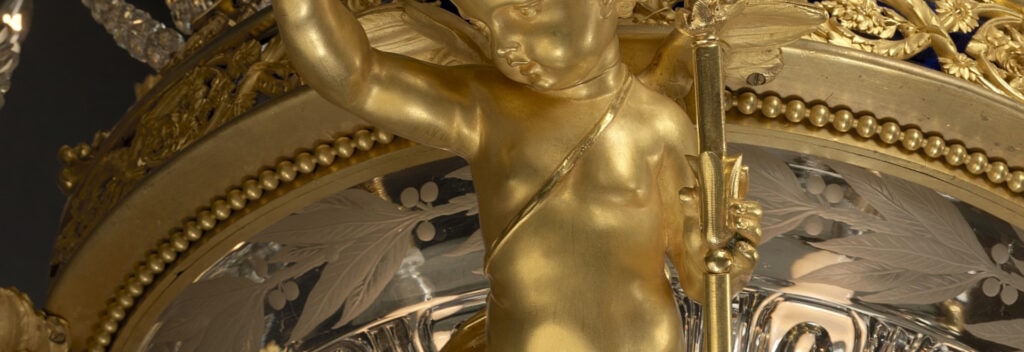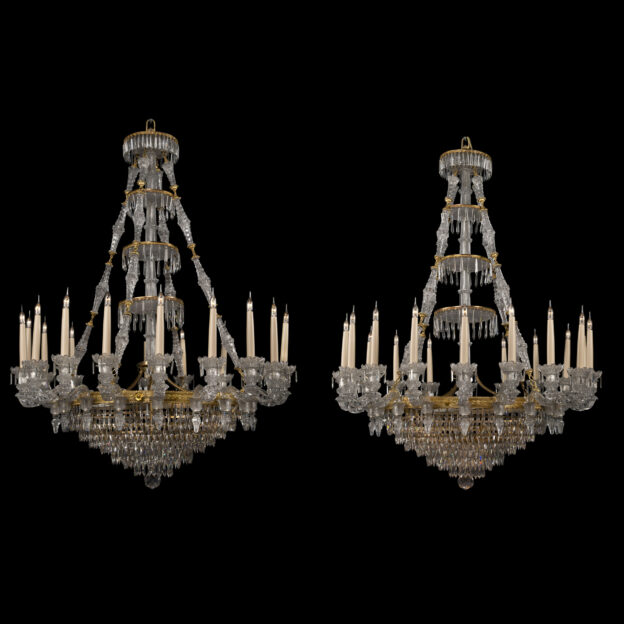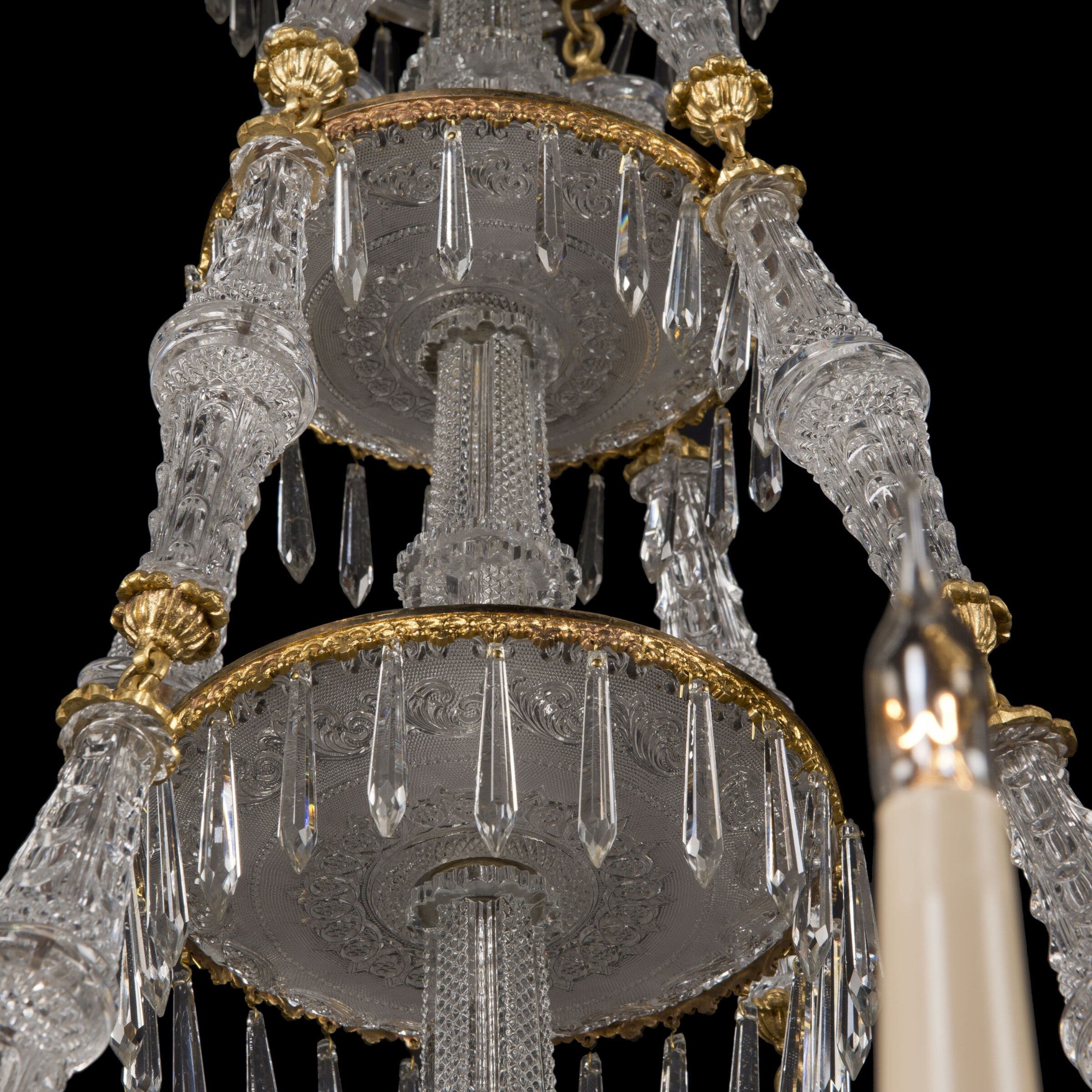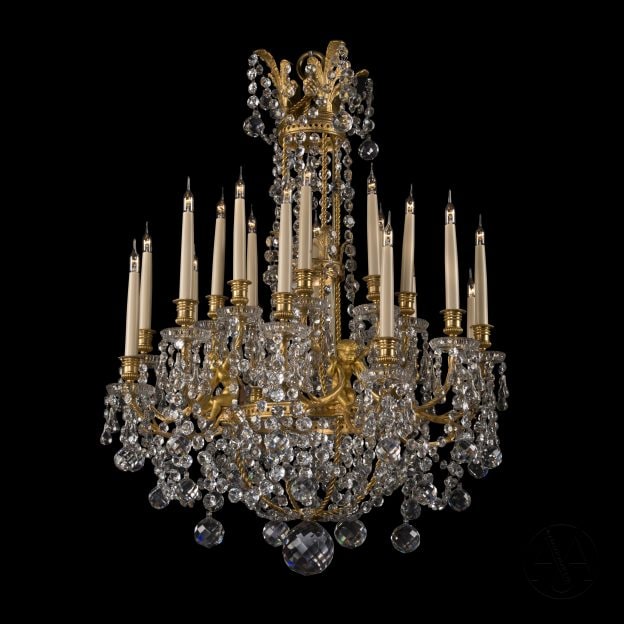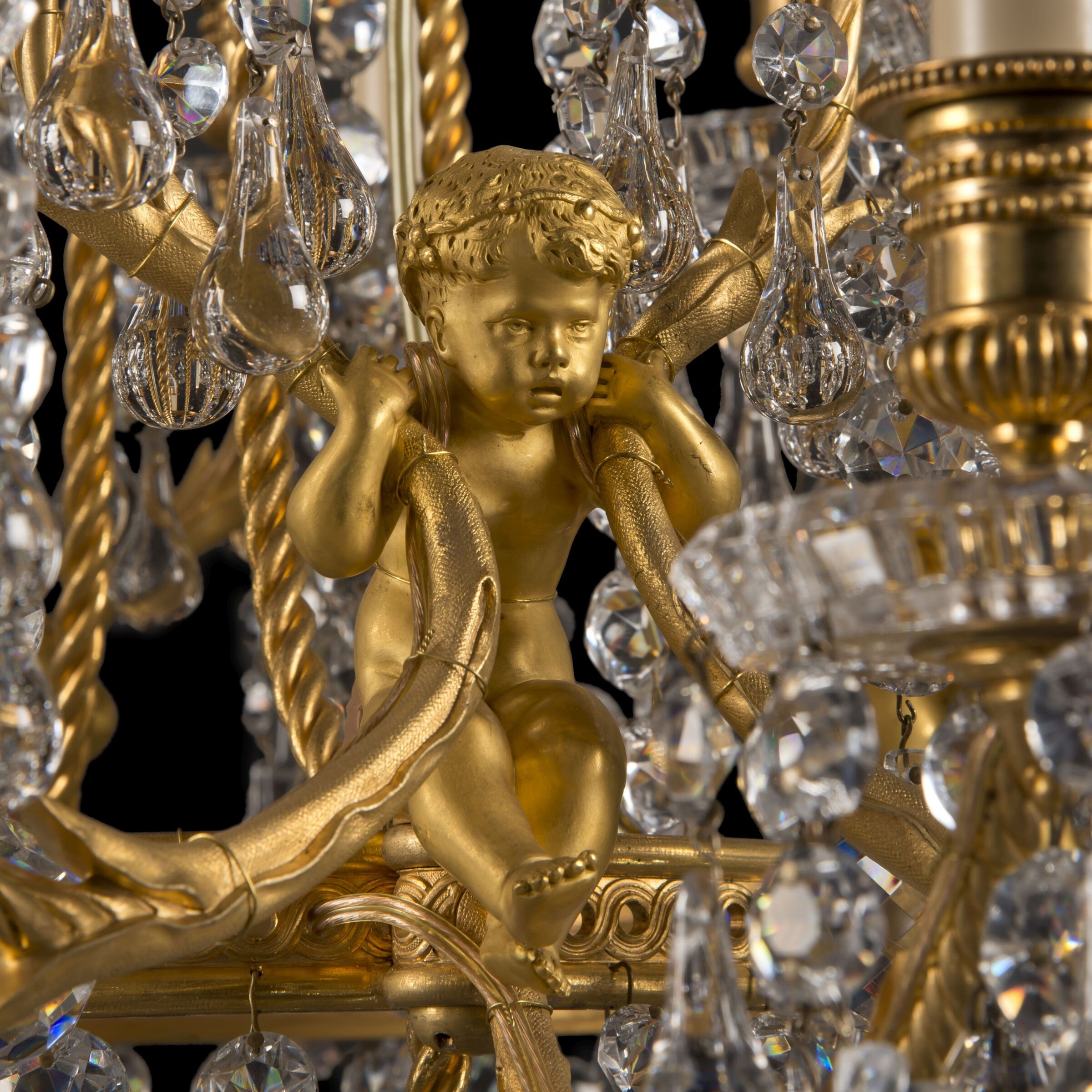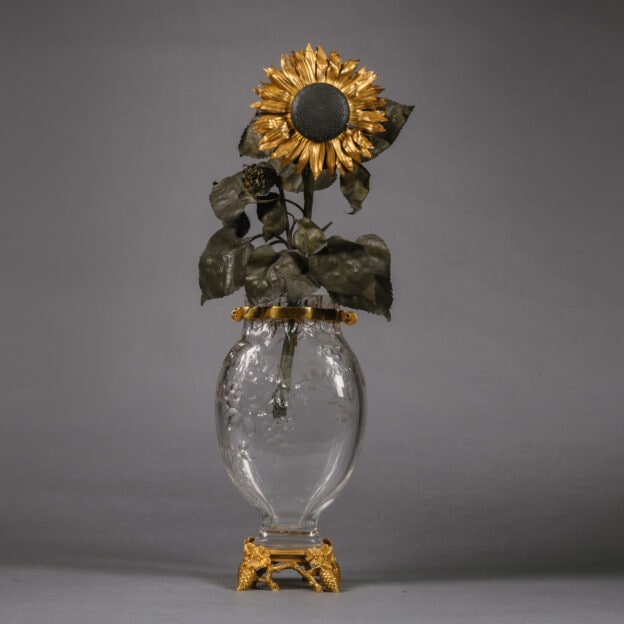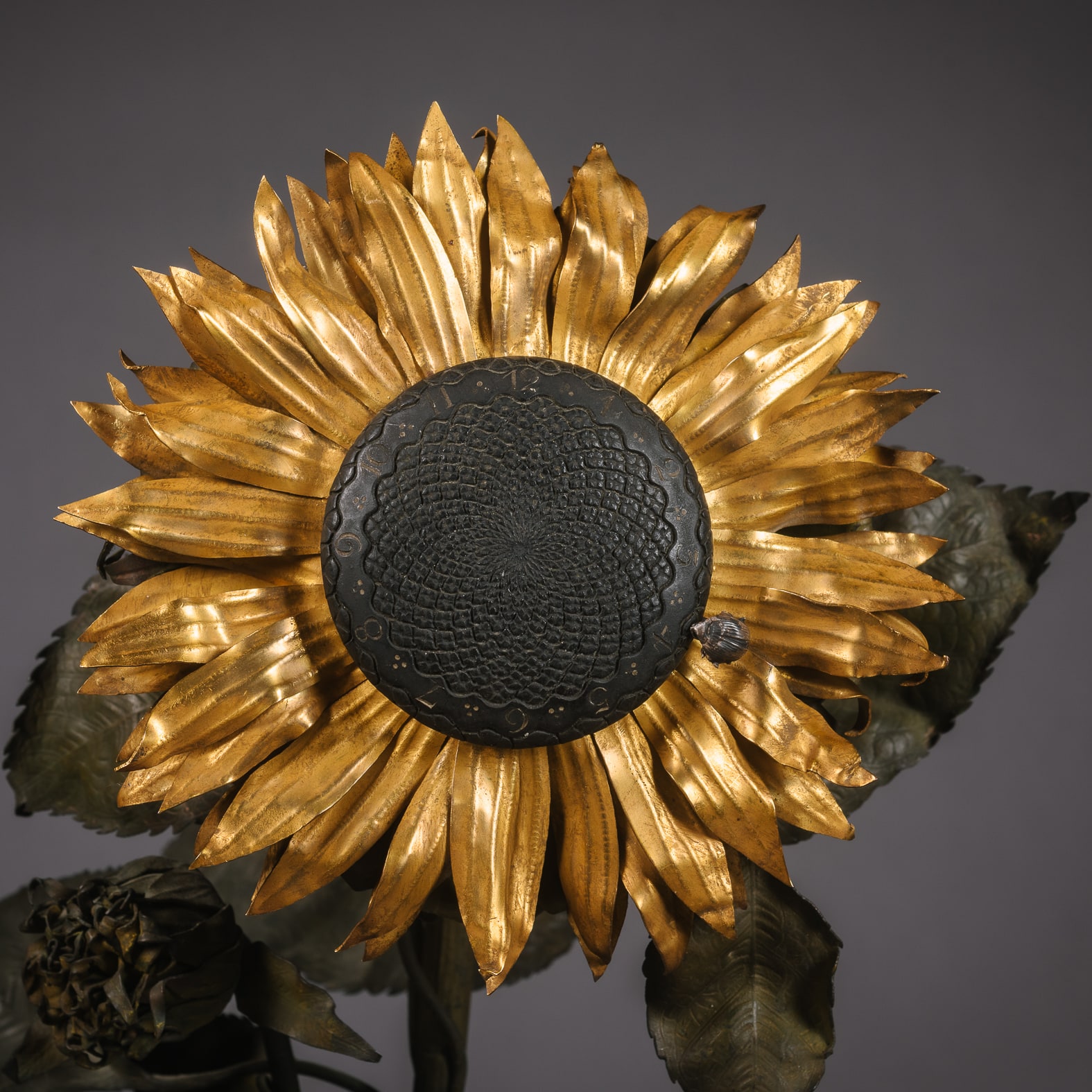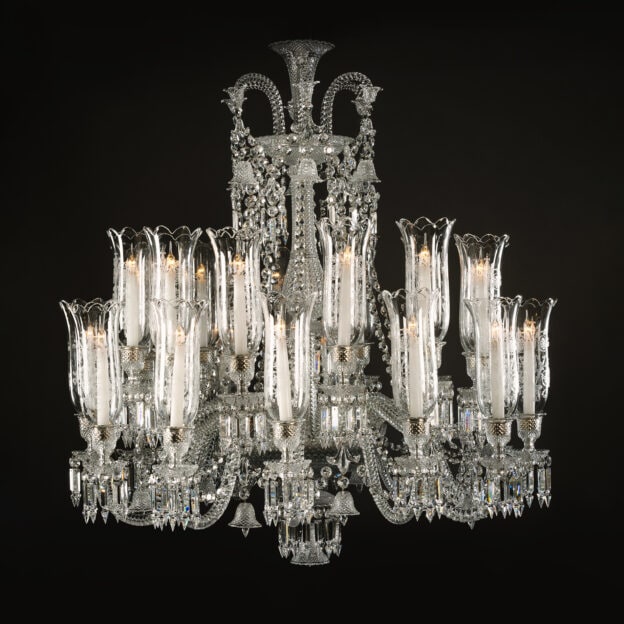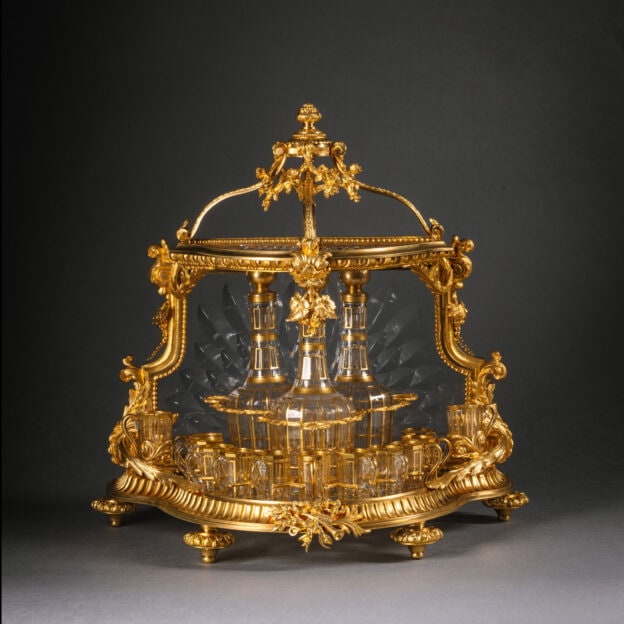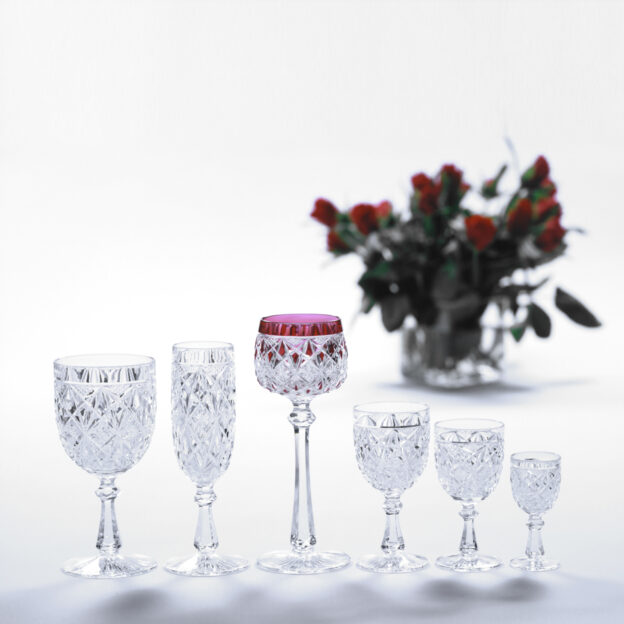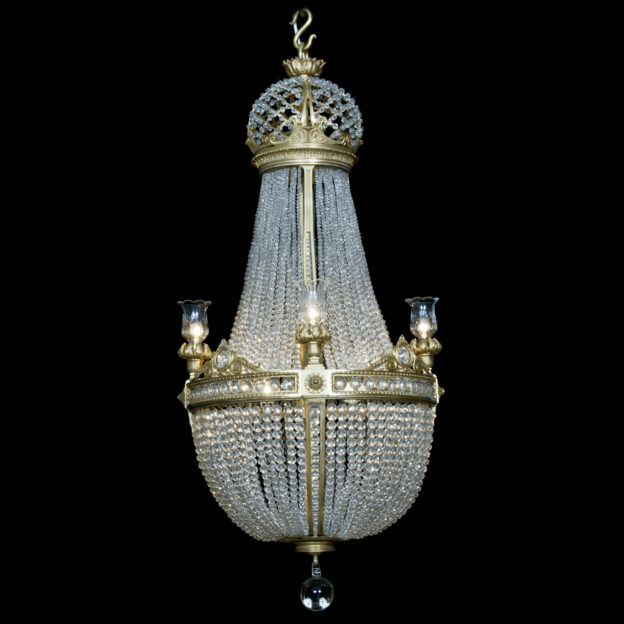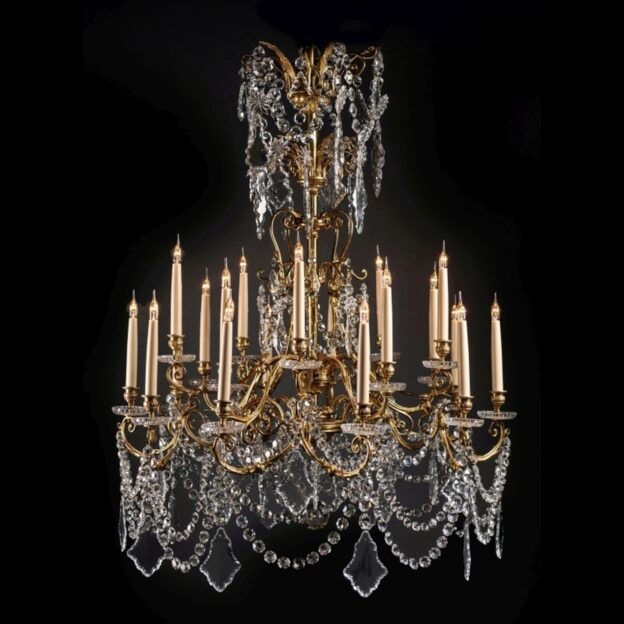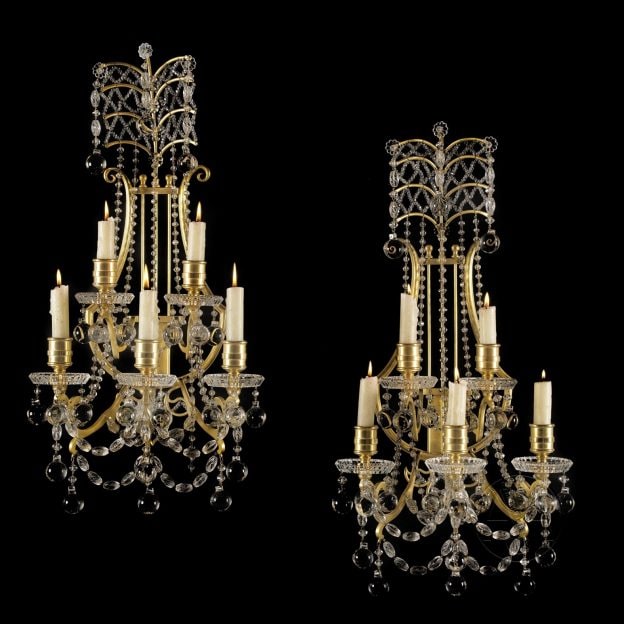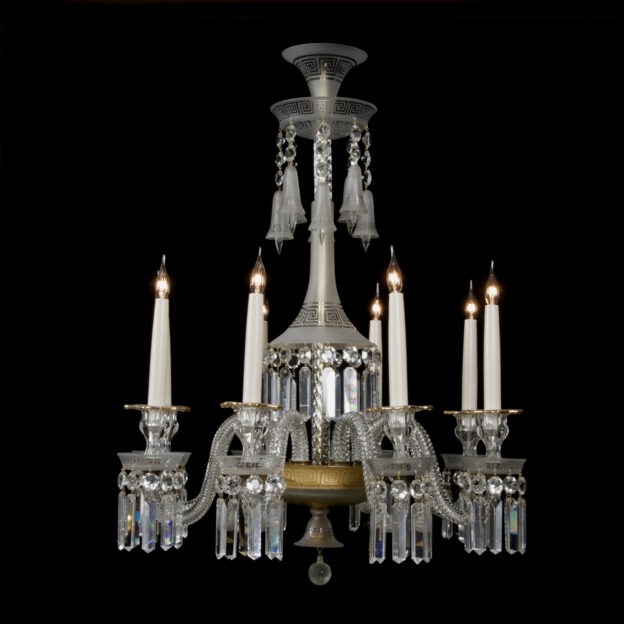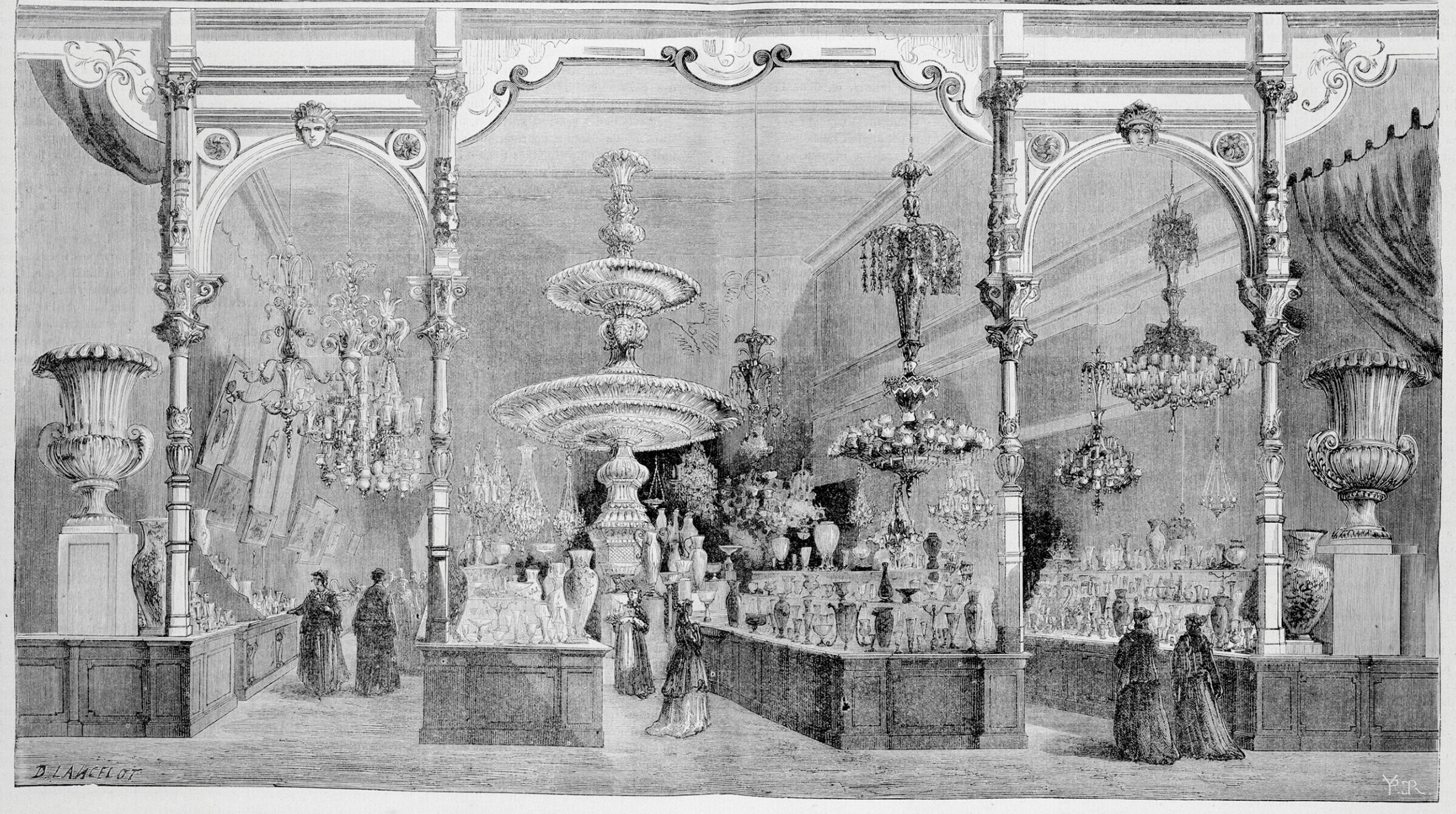
Baccarat at the Great Exhibitions
In 1764 Louis XV gave permission to establish a glassworks in the town of Baccarat in the Lorraine region in eastern France. By the nineteenth century the different glass manufactories of the town had come together as the Compagnie des Cristalleries de Baccarat.
By the second half of the nineteenth century, Baccarat’s reputation was established at the great exhibitions of the day, notably with a magnificent display at 1855 Paris Exposition and in 1867, with a stand centred around a gigantic fountain, twenty-four feet tall, with a basin ten feet in diameter (illustrated above). In 1878 Baccarat exhibited an astonishing glass rotunda standing five meters high and made from nearly two thousand pieces of glass. Baccarat’s crowning achievement saw the unveiling of Art Nouveau designs at the ‘Exposition internationale de l’Est de la France’, Nancy, in 1909.
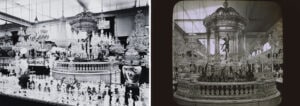
Baccarat’s stand at the 1878 Paris Internation Exhibition was dominated by ‘Le Temple de Mercure’, a remarkable pavilion made of glass and centred by a statue of mercury after Giambologna.
Baccarat – The Crystal of Kings
Baccarat’s cliental included global royalty, heads of state, such as the Shah of Persia, the Sultans of the Ottoman Empire, the Queen of Siam, the Emperor of Japan, the Tsars of Russia, and the maharajas of India.
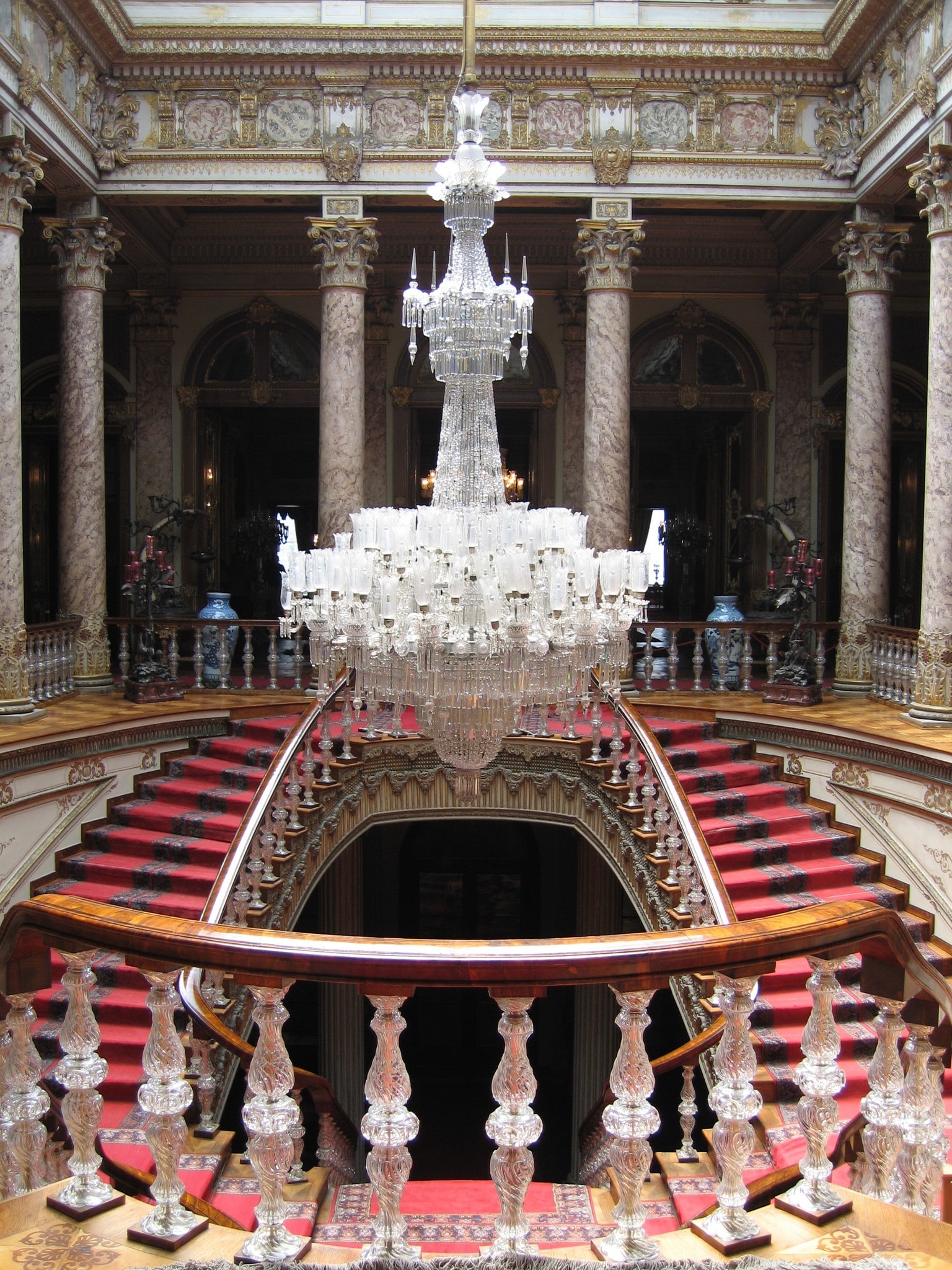
Chandelier and balastrades of Baccarat crystal for the Dolmabahçe Palace, Istanbul. Sultan Abdülaziz commissioned from Baccarat a large number of monumental chandeliers and candelabra in clear and red crystal enhanced with gold, which are particularly remarkable for their bobèches in the form of stylized tulips, the symbol of the Ottoman Empire.
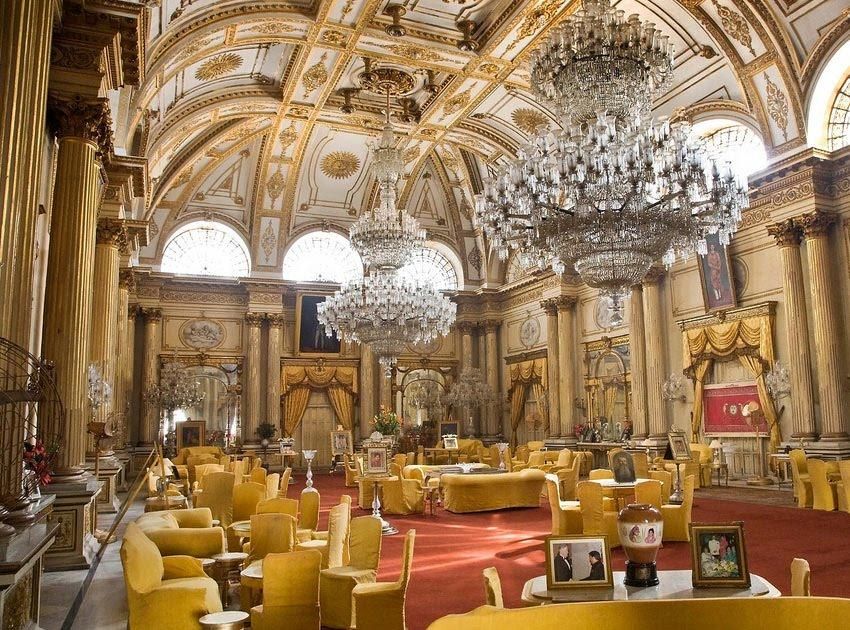
Two of the largest Baccarat chandeliers known are at the Jai Vilas Palace in Gwalior, India. The staggering creations weigh three tonnes each. The Jai Vilas Palace was built in 1874 by Jayajirao Scindia, the Maharaja of Gwalior. Equalled perhaps only by the Romanovs, the maharajahs were the most significant patrons for Baccarat, and for their English competitors, Osler. Magnificent crytal chandeliers can be found in the palaces of India’s maharajahs.
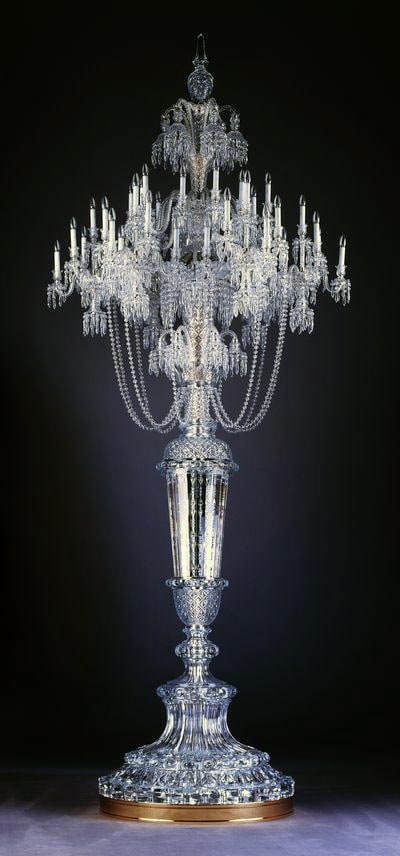
Standing nearly thirteen feet tall, this candelabrum for seventy-nine candles was first shown by Baccarat at the Paris Exposition universelle of 1878. This model is listed in the Baccarat archives as a ‘variant of the CE 7 form.’ Tsar Nicolas II admired this model during his visit to Paris in 1896 and it would henceforth be known as the ‘candélabre dit du Tsar’ (the Tsar’s candelabrum). Elements of this model of candelabra have been identified among the wreckage of the Kursk, a ship which sank in 1912 on its way to St. Petersburg from France. It is believed that approximately five or six pairs of ‘candélabre dit du Tsar’ were created in the early 20th century.
Baccarat – Sculptor in Crystal and Bronze
Baccarat collaborated with sculptors including François Hippolyte Moreau (1832-1927) and Charles Vital-Cornu (1851-1927), and bronze foundries, such as Thiébaut Frères, to make ever more elaborate creations. Coupling Baccarat glass with gilt-bronze also heightens the opulence, by creating more reflections as the light plays of the crystal prisms and chiselled gold.
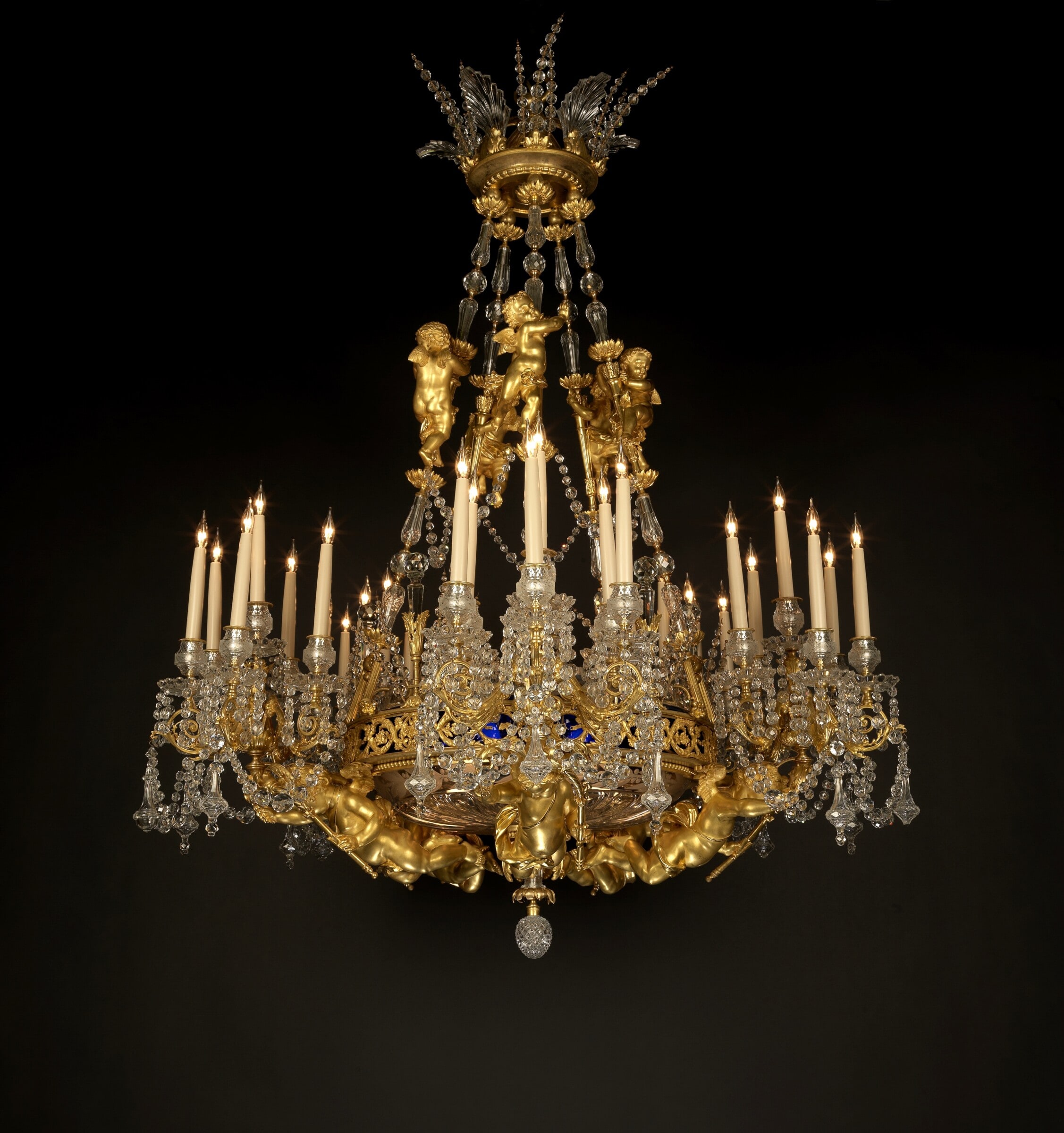
The most desirable Baccarat chandeliers combine ‘crystal glass’ with gilt-bronze sculptural mounts. The chandelier illustrated above is a famous and rare model, a magnificent creation from the Napoleon III period, modelled with finely cast gilt-bronze cherubs holding aloft the candles.
A drawing of the remarkable sculptural chandelier illustrated above
(© Baccarat, archives de la manufacture).
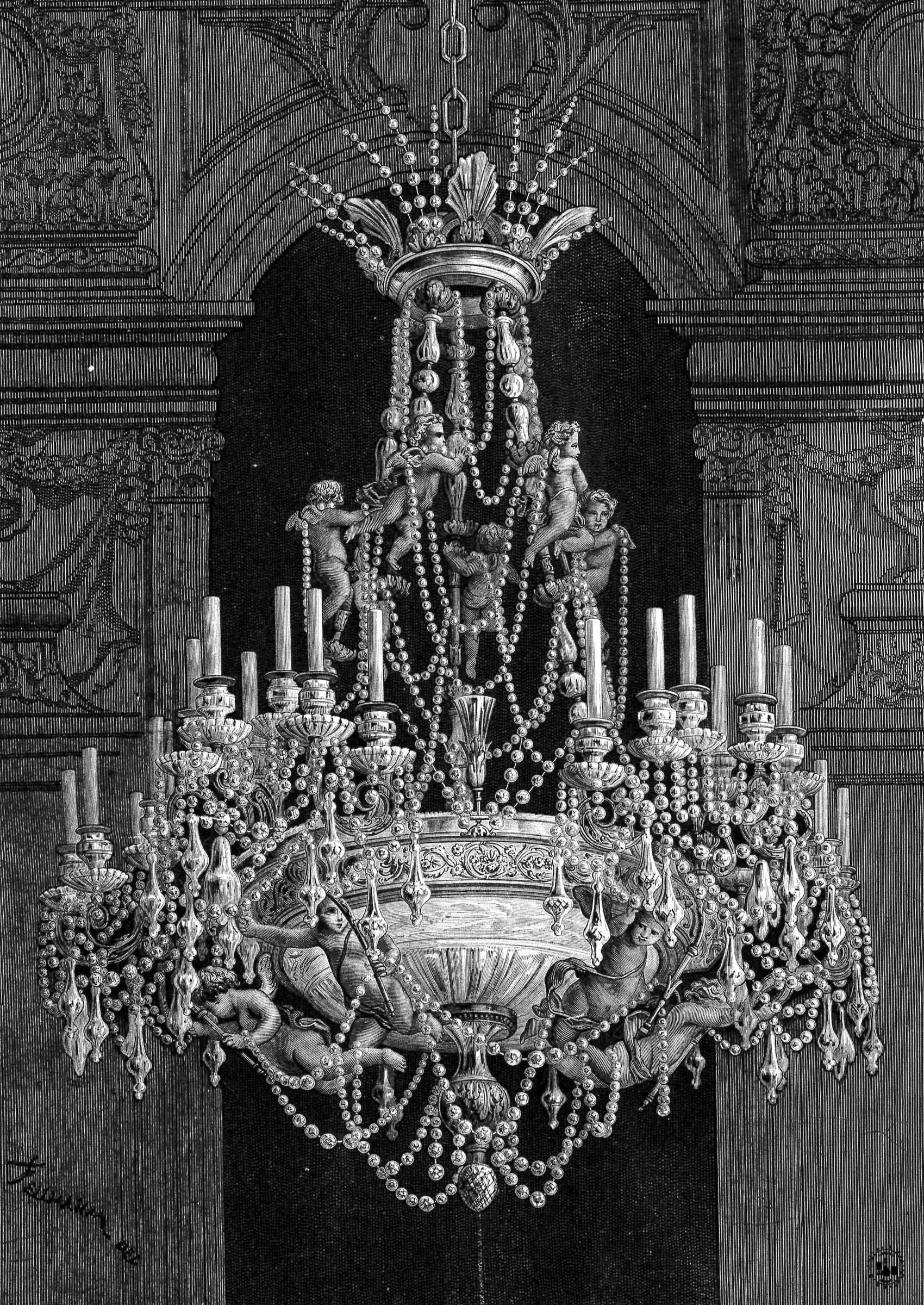
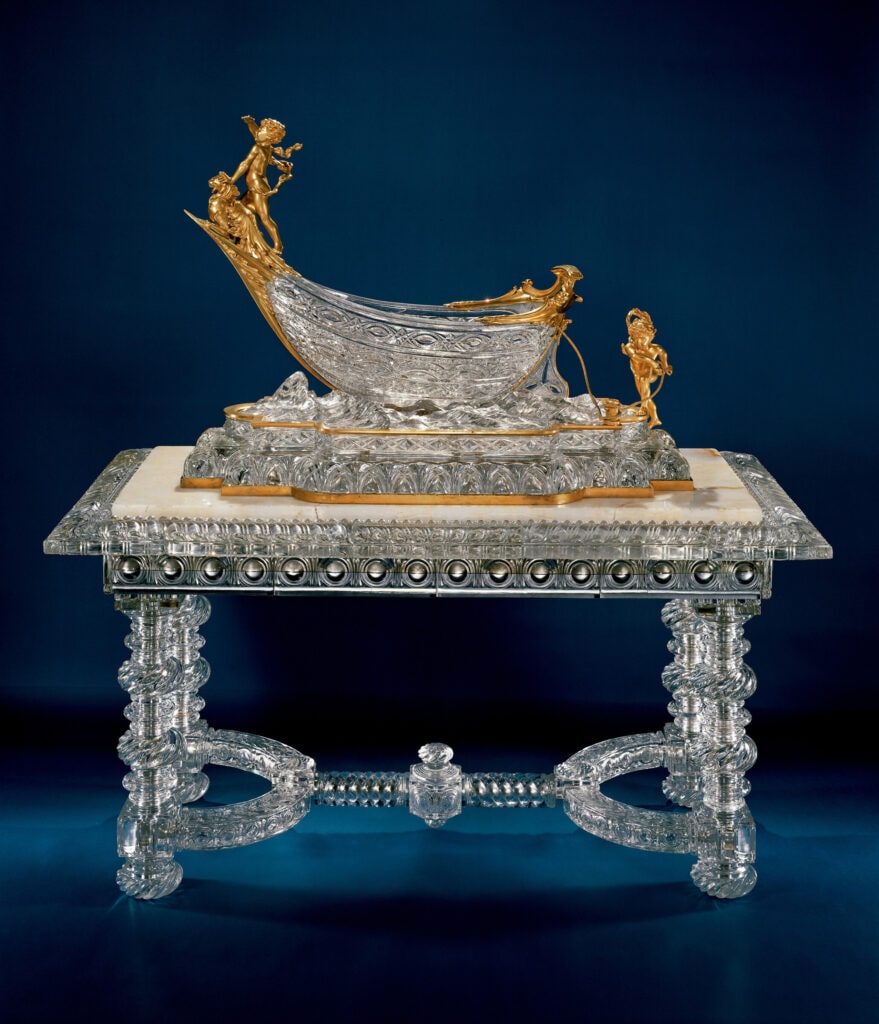
‘Table et nef’ is one of Baccarat’s most amazing sculptural creations. Designed by Charles Vital Cornu and created by Baccarat it was shown atop the table at the 1900 Paris Exposition Universelle.
©The Corning Museum of Glass, Corning, New York (79.3.155).
Right, related vase showing ‘Japonisme’ and Art Nouveau influences, in the V&A Museum, London. (C.1242-1917).
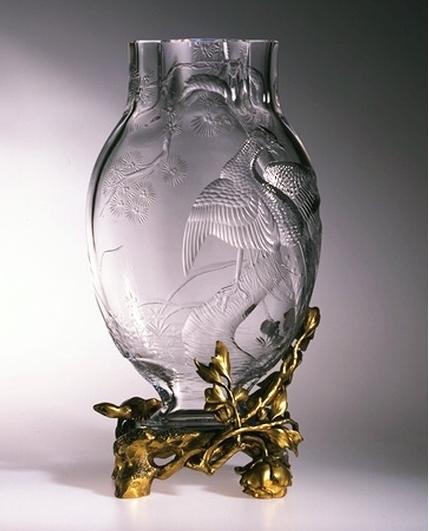
‘Pendule Fleur d’Hélianthe’ – this sunflower is actually a metal clock dial suspended in a Baccarat crystal vase, and is exemplary of the ingenious ‘objets de luxe’ created when Baccarat were at the height of their creative powers at the turn of the 20th century, a period which culminated in their award winning display at the Exposition Internationale de l’Est de la France, held in Nancy in 1909.
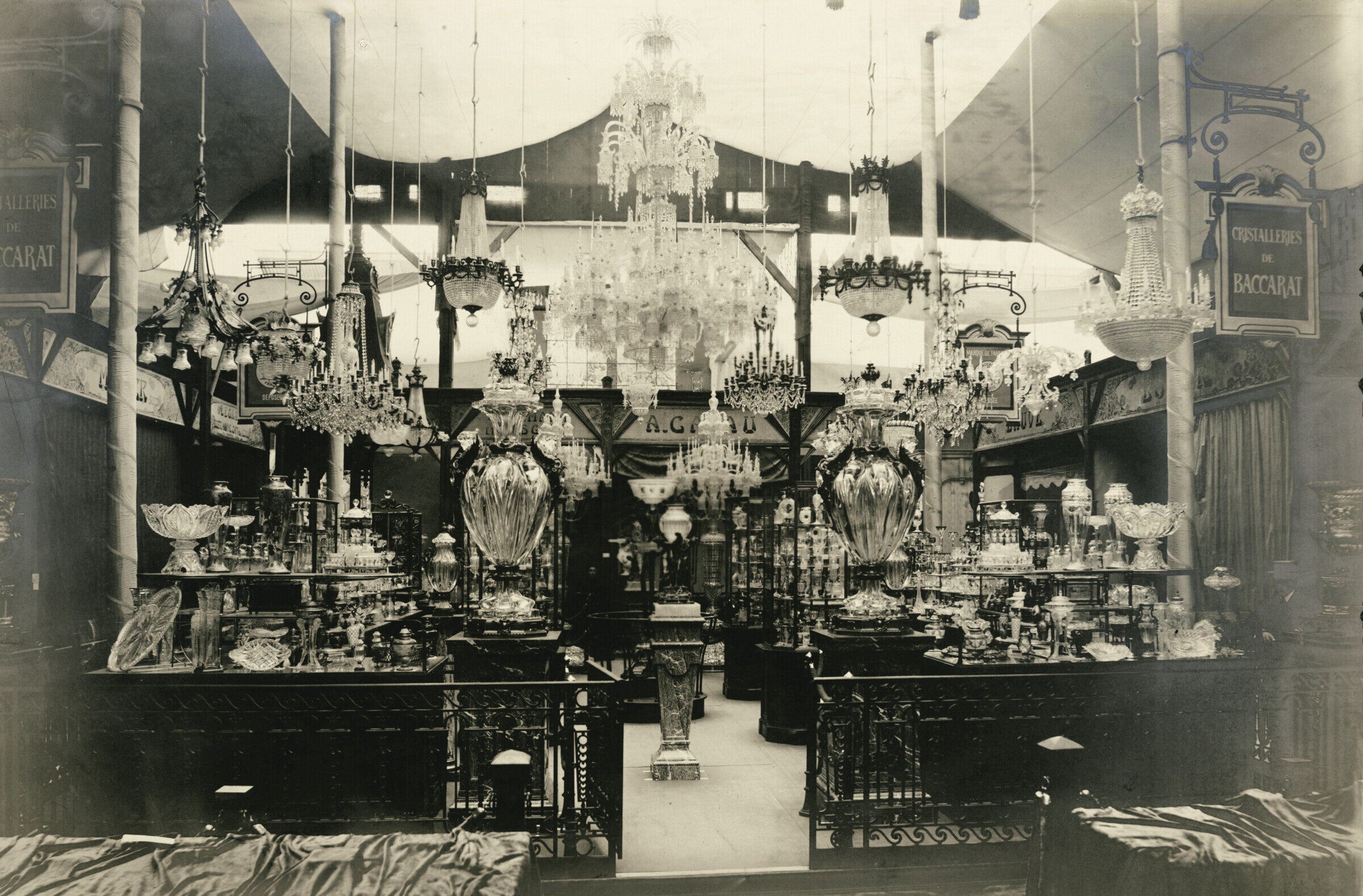
Baccarat’s stand at the Exposition internationale de l’Est de la France, Nancy, 1909.
Baccarat – Signatures, stamps and marks
In the mid-19th century Baccarat discovered that the addition of nickel oxide in the manufacturing process created a perfectly clear product, free of discolouration, that imitated precious rock crystal.
Baccarat glass was coined ‘crystal glass’, which is prized for both its unusual clarity and its great solidity and weight. The term ‘crystal’ can only be applied to glass which contains at least 24 per cent lead oxide.
Baccarat also produced cranberry or ‘Gold Ruby’ glass, which is made by a complex process adding gold chloride which turns the glass red when refired.
The glass is fired in a furnace so it can be blown and pulled into shape, usually with the aid of a mould. Blown elements of Baccarat glass are drawn out by hand with great skill and you can see this, especially with older chandeliers, in the slight irregularities of the pendants and drops. Different parts can be returned to the furnace to be fused together. The glass cutter’s job is as highly skilled as that of the glass blower. The crystal is carved like a sculpture to minutely varying depths by holding the glass against a sandstone or diamond-set rotating wheel. A steady hand is required to create straight or crossed lines, and to realize an intricate geometrical advanced pattern.
Last in the process for some Baccarat glass is gilding and, sometimes, the application of coloured enamel. Gilding must be applied at just the right thickness otherwise it fails to set properly and uses a mix of gold power applied by hand with a paintbrush.

